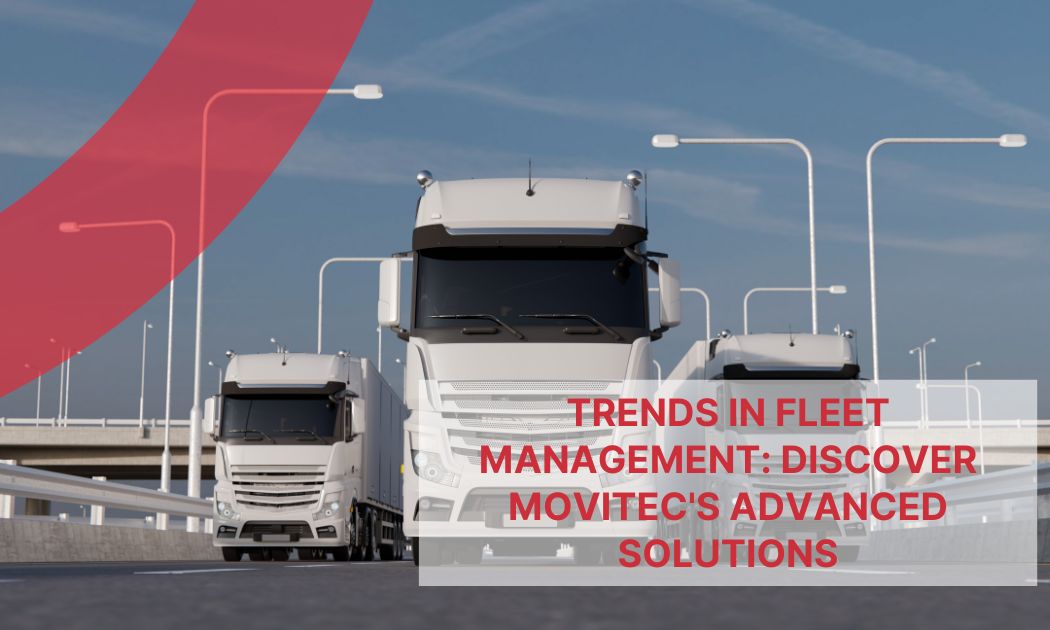New trends in fleet management to improve competitiveness
Today’s changing market, where several different agents operate, makes it necessary to rethink the role of corporate fleets. This involves finding ways to be more efficient, to be more competitive, but also for reasons of Corporate Social Responsibility (CSR).
Company fleets have to be managed very well to really do their job. In recent years, and facing the challenge of the 2030 Agenda, certain objectives have accelerated, and this has consolidated some of these trends. It is vital to bear these in mind because they are part of everyday life, both for large companies and SMEs.
There are 4 trends in fleet management that you must take into account to achieve your goals. Take note:
1. Optimizing the resources for fleet management
Optimizing your resources in fleet management rests on the assumption that all resources must be used rationally. This applies to the fleet itself, but also to other infrastructures.
For example, you can combine different means of transport in an efficient way, depending on how you manage them, or the phase of the transport. It makes no sense to use a truck to move around a big city, if you can do it with a motorcycle. The same applies to cars or other means of transport in your fleet, which must be used judiciously. These are medium and long term policies, so you must be clear about what means of transport you use at all times.
The second way to optimize resources is through better space management. Warehouses have limited capacity, but you can make the most of every centimeter if you use your resources well, so you can fit more merchandise. The use of Movitec’s ring wrapping machines can help you here.
Finally, don’t forget that time is also a factor to be taken into account. Fleets should not be kept waiting for pallets, and the stretch wrapping machines can also help you here. In fact, there are models such as the Saturn S8 that can wrap up to 160 loads per hour, freeing up space and avoiding wasted time.
2. Lower emissions
The second trend that is consolidating in fleet management is the commitment to reducing emissions, a policy that cuts across all other areas. Firstly, because there are already many cities (Madrid and Barcelona) that restrict the circulation of polluting vehicles. On the other hand, because vehicles with higher emissions tend to consume more. In addition, road tax is heavier for vehicles that pollute more. And finally, because customers demand that companies be green and show a commitment to the environment.
There are several ways that we can lower emissions when managing professional fleets. On the one hand, by combining the factors efficiently, both vehicles and spaces, and even with packaging. We can also renew the fleet gradually, taking advantage of the support and incentives that the Government offers in some cases. And, of course, keeping vehicles serviced and up to date will also help to reduce emissions.
3. Agile response
Agility in response to any incident that may arise is another of the challenges that customers look for. And it should be noted that this applies equally to small or large scale transport, although the resources involved and the end customer are different.
For example, a freight forwarder has to be quick to offer quotations for a shipment. In a rapidly changing market, providing information in real time, where possible, can become a vital element. It means that the customer knows what to expect, and it removes the risk factor associated with uncertainty. Keep in mind that this is vital when it comes to moving large quantities of goods that have to be transported by truck.
But agility also applies on a small scale, when a price inquiry is made. If you are the delivery company, you must provide an accurate and guaranteed quote as soon as possible. Whatever the scale, the important thing is to respond quickly and to offer reliability.
4. Wholesale improvement of customer service
The thorough improvement of customer services is another medium and long term measure. It should also be noted that good customer service relies on internal communication channels that work well; the Internet helps, but the chain of command must be firmly established. These are the elements where fleet management can be improved:
- Prompt response to any incident that may arise. If there is a customer complaint, it must be dealt with in the shortest possible time. The idea is to be able to respond to a critical or problematic situation by connecting drivers and switchboard.
- Control of traceability When goods get lost or damaged, besides our accountability towards the customer, we need to be able to detect where the problem lies, which means that traceability controls must be in place. This will assign responsibilities and minimize the risk of the problems repeating.
In short, a well-managed corporate fleet is one that responds quickly to customer demands. The connectivity of drivers, both by telephone and Internet, must encourage communication, both internally and externally.
In a nutshell
Fleet management, today and tomorrow, is more ecological, by optimizing the resources at its disposal and operating with greater agility. At Movitec, we have high quality stretch wrapping machines to help you manage your space better and not lose timeContact us at to learn more about our catalog!


